Many pests arise and cause harm.
In the 2024-2025 winter-spring crop, Hue city planted over 27,900 hectares of rice. Currently, the rice is in the stage of heading, preparing to bloom, expected to bloom from April 10 to 20. In general, the rice is growing and developing well, however, harmful organisms in the fields such as leaf blast, small leaf roller, brown spot disease... have appeared, capable of causing damage to rice from the flowering stage to the milky, green stage.

Pests and diseases have emerged and caused severe damage locally in fields in Hue. Photo: Van Dinh.
In Phong Dien town, this winter-spring crop, the locality planted about 4,950 hectares of rice. After finishing spraying pesticides, Mr. Nguyen Ngoc Bang (54 years old, residing in Dai Phu village, Phong Chuong commune) shared that this crop, his family mainly produced 2 high-quality short-term rice varieties, HG12 and HG244, on an area of 1.5 hectares.
“I have participated in the local cooperative. Since the beginning of the season, I have strictly followed the technical steps as instructed by the government, agricultural extension officers and the cooperative. I have monitored pests and fungi and have sprayed herbicides, rice blast prevention chemicals, etc. In a few days, I will continue to spray other chemicals for prevention, and I will also keep up to date with the weather,” said Mr. Bang.
Mr. Nguyen Van Quang - Director of the Agricultural Service Center of Phong Dien town informed that up to now, 45 hectares of single-crop rice and early-sown rice of some units such as Phong Son, Phong Xuan, Phong Hien, Phong Thanh have bloomed, the main rice area is in the standing-heading stage. Through field investigation, some pests and diseases have appeared, leaf blast disease appeared locally on susceptible varieties, brown spot disease occurred and caused damage in densely sown fields, and small leaf rollers caused scattered damage. In addition, yellow leaf disease, bacterial stripe spot, and silver leaf disease caused local and scattered damage.
“The center has instructed and directed people to manage and prevent pests on winter-spring rice. In addition, farmers are advised to keep water in the fields stable and reasonable during the rice panicle-flowering and greening stages, and should not drain the water too early, but should only drain the water 7-10 days before harvest. The time to spray pesticides to prevent pests should be in the cool afternoon to ensure effectiveness…” said Mr. Quang.

Pests and diseases need to be prevented early. Photo: Van Dinh.
Also according to records, many rice fields in other localities such as Phu Loc, Quang Dien, Huong Tra, Phu Vang... have scattered pests and diseases, making farmers quite worried, while the weather is still cold, foggy, and high humidity, making the risk of pests and diseases continuing to arise and cause severe damage.
More than 445 hectares infected with leaf blast
According to the Department of Agriculture and Environment of Phu Vang district, cooperatives in the district have propagated, mobilized, and guided farmers to implement measures to care for winter-spring rice. They have conducted pruning to ensure density, applied fertilizer according to the correct process, organized the catching of golden apple snails, and killed rats in batches using manual measures or biological drugs.
The district also directed relevant units to coordinate closely in providing electricity and pumping water in a timely manner according to production requirements, not to let the fields lack water. At the same time, the unit will closely monitor the area, and work with farmers to proactively forecast the situation of pests and diseases to detect early and handle them promptly when pests and diseases appear, not to let pests and diseases spread widely, affecting the yield and quality of rice.
According to the Department of Cultivation and Plant Protection of Hue City, it is forecasted that in April, in addition to the ongoing cold spell, Hue City is likely to experience 1-2 cold spells and intensified cold spells, concentrated in the early and mid-month periods, alternating with sunny spells, foggy nights and early mornings, creating favorable conditions for pests and diseases to develop such as rice blast, grain smut, brown spot disease and small leaf rollers, stem and stem rot, etc.
Currently, the main pests in the fields in Hue are rice blast disease (infected area of 445ha, infection rate of 5-10%, locally 30-50%); brown spot disease on 350ha, infection rate of 1-3%, high places 5-10%; small leaf rollers with a density of 1-3 individuals/m2, high places 5-10 individuals/m2.

Leaders of the Department of Agriculture and Environment of Hue city inspect the situation of pests and diseases on winter-spring rice. Photo: Van Dinh.
Mr. Ho Dinh - Head of the Department of Cultivation and Plant Protection of Hue City informed that the Department of Agriculture and Environment and the Department have been coordinating with localities to guide cooperatives and farmers to strengthen management and prevention of pests and diseases on rice, especially spraying...
“The Department arranges staff to coordinate with wards, communes, towns, cooperatives... to guide farmers to visit the fields regularly, regulate water properly, fertilize at the right time... so that the rice plants can grow well. Along with that, the unit increases staff to go to the fields to check and monitor harmful organisms and weather developments to have timely prevention measures to minimize the impact on rice productivity and output,” Mr. Dinh shared.
Hue City Department of Cultivation and Plant Protection provides instructions on spraying pesticides to prevent and control pests and diseases on rice as follows:
- For neck blast disease: Spray when the rice is sparsely blooming (3 - 5% blooming), especially spray carefully on areas previously heavily infected with leaf blast.
- For grain sterility disease: Spray when the rice is sparsely flowering (3 - 5%) and after the rice has finished flowering (7 days after the first time).
- For brown spot disease: Spray when the disease is just starting to cause damage, especially in fields with dense sowing, low-lying areas, stagnant water...
- For small leaf rollers: The worms are expected to hatch from April 4 to 11, causing damage to rice during the flowering stage. It is necessary to check and assess the density and direct spraying in areas with high density.
- For brown planthoppers: Closely monitor and inspect the development of planthoppers in the fields, especially on susceptible varieties and areas with heavy damage caused by planthoppers every year to proactively spray in areas with high density.
Source: https://nongnghiep.vn/thoi-tiet-thuan-loi-cho-nhieu-sau-benh-phat-sinh-gay-hai-lua-xuan-d746479.html


![[Photo] President Luong Cuong presents the 40-year Party membership badge to Chief of the Office of the President Le Khanh Hai](https://vphoto.vietnam.vn/thumb/1200x675/vietnam/resource/IMAGE/2025/5/19/a22bc55dd7bf4a2ab7e3958d32282c15)
![[Photo] Panorama of the Opening Ceremony of the 43rd Nhan Dan Newspaper National Table Tennis Championship](https://vphoto.vietnam.vn/thumb/1200x675/vietnam/resource/IMAGE/2025/5/19/5e22950340b941309280448198bcf1d9)

![[Photo] General Secretary To Lam attends the conference to review 10 years of implementing Directive No. 05 of the Politburo and evaluate the results of implementing Regulation No. 09 of the Central Public Security Party Committee.](https://vphoto.vietnam.vn/thumb/1200x675/vietnam/resource/IMAGE/2025/5/19/2f44458c655a4403acd7929dbbfa5039)

![[Photo] Close-up of Tang Long Bridge, Thu Duc City after repairing rutting](https://vphoto.vietnam.vn/thumb/1200x675/vietnam/resource/IMAGE/2025/5/19/086736d9d11f43198f5bd8d78df9bd41)
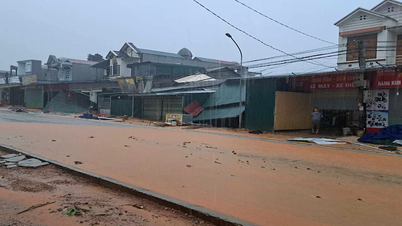



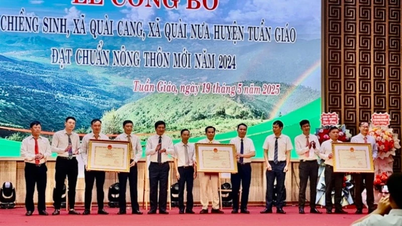
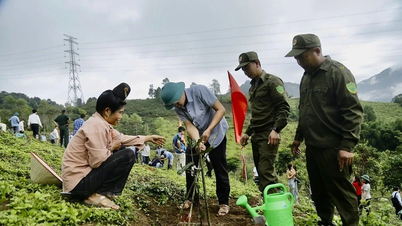
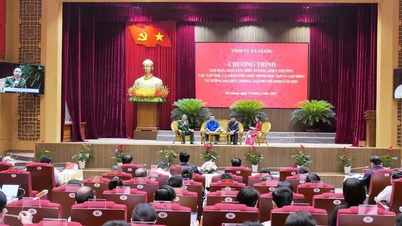







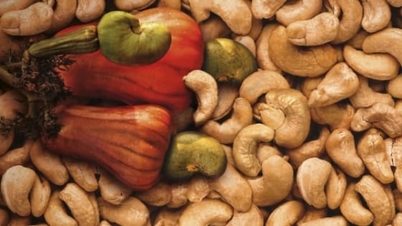
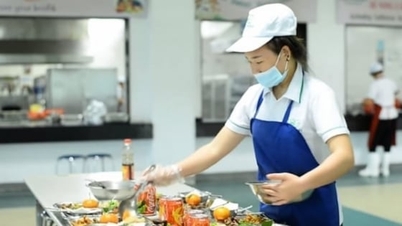
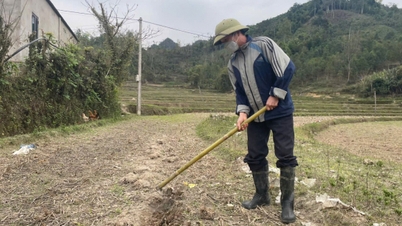
![[Photo] Prime Minister Pham Minh Chinh inspects the progress of the National Exhibition and Fair Center project](https://vphoto.vietnam.vn/thumb/1200x675/vietnam/resource/IMAGE/2025/5/19/35189ac8807140d897ad2b7d2583fbae)














































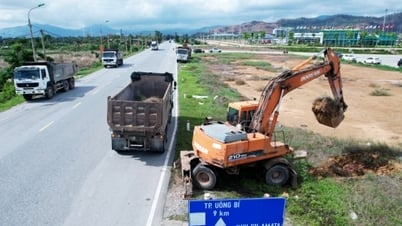









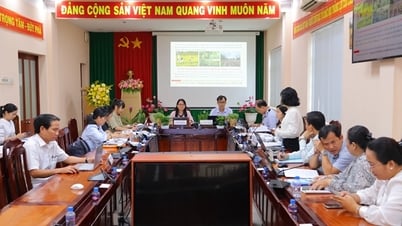




![[VIDEO] - Enhancing the value of Quang Nam OCOP products through trade connections](https://vphoto.vietnam.vn/thumb/402x226/vietnam/resource/IMAGE/2025/5/17/5be5b5fff1f14914986fad159097a677)



Comment (0)